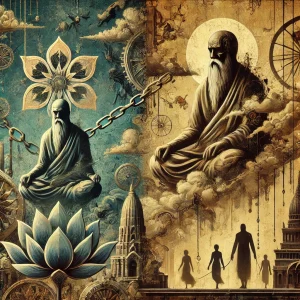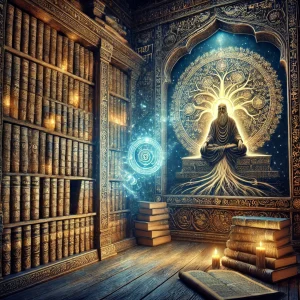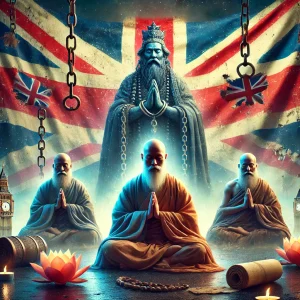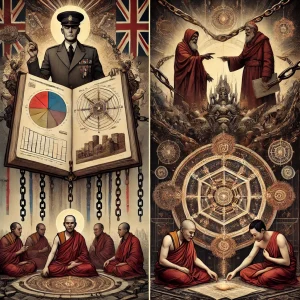Killing the Guru: Posthumous Character Assassination as Colonial Cultural Control

Abstract: This paper examines the increasing trend of posthumously discrediting renowned figures from Indian wisdom traditions, including Yogi Bhajan, Maharishi Mahesh Yogi, Swami Satchidananda, and Osho. It locates this trend within the broader historical and epistemological context of colonialism, reductionism, and moral projection by Western cultural norms. These teachers introduced transformative ontologies concerning human consciousness, the nature of mind, and spiritual evolution to the West. This article argues that the current critiques often echo colonial strategies of epistemic violence—discrediting indigenous wisdom through character assassination, cultural misinterpretation, and reductionist moral judgment. Through a decolonial and ontological framework, this paper challenges prevailing assumptions, questions the legitimacy of Western evaluative frameworks, and calls for a more nuanced and respectful engagement with Eastern spiritual traditions.
- Introduction: The Arrival of Light in a Post-War Western Void The second half of the 20th century marked a radical encounter between Western societies grappling with post-war nihilism and ancient Indian wisdom traditions that had cultivated inner technologies for millennia. Figures such as Harbhajan Singh Khalsa (Yogi Bhajan), Maharishi Mahesh Yogi, Swami Satchidananda, and Osho introduced teachings that radically redefined notions of self, reality, and consciousness for Western audiences. These teachers did not simply offer practices of yoga or meditation—they delivered ontological frameworks that challenged the Cartesian dualism and materialist foundations of the modern West.
Emerging amidst civil rights movements, anti-war protests, and the sexual revolution, these spiritual teachers responded to a profound existential void. They provided paths that spoke to inner transformation, aligning with timeless principles such as Atman, Brahman, Shakti, and the law of karma. These were not belief systems imposed but experiential processes of self-realization. The influence was immediate and widespread, with millions experiencing previously unknown states of awareness. 
- Ontological Foundations of Indian Wisdom Traditions Indian spiritual traditions are founded upon ontology—the study and direct realization of being. Advaita Vedanta, Yoga, and Sikh mysticism share a non-dual view of reality, where the true self (Atman) is not separate from the ultimate reality (Brahman or Ik Onkaar). This contrasts sharply with the Western epistemology rooted in materialism, where the self is often reduced to neurological processes and psychological constructs (Capra, 1996).
These traditions present a multi-dimensional view of human existence, involving gross, subtle, and causal bodies (Sthula, Sukshma, and Karana Sharira), and emphasize direct experiential knowledge (anubhav) over dogma. Practices such as dhyana (meditation), pranayama (breathwork), and mantra are vehicles for realigning consciousness with its source. The ultimate aim is liberation (moksha), not mere psychological well-being.
- The Role of the Guru: Transmission Beyond Personality Central to these traditions is the Guru-shishya (teacher-student) dynamic, wherein transmission of knowledge occurs not merely through instruction but through energetic resonance and direct experience. This relationship is ontological and karmic, rooted in lifetimes of interconnected evolution (Feuerstein, 1996).
Western interpretations often misconstrue this relationship as hierarchical or cultic due to lack of familiarity with its metaphysical and ethical underpinnings. As Vivekananda (1896) noted, the Guru is not just a teacher but a spiritual transmitter—a mirror of the higher self.

- The Playbook of Discreditation: Colonial and Postcolonial Echoes The current wave of posthumous criticism follows a predictable pattern: focus on the teacher’s sexuality, financial dealings, or personal eccentricities; decontextualize practices from their cultural and metaphysical grounding; and amplify dissenting voices as definitive truth. These strategies reflect an epistemic violence that mirrors colonial tactics used to undermine indigenous leaders and traditions (Said, 1978; Shiva, 2005).
The British colonial administration in India systematically portrayed yogis, fakirs, and mystics as fraudulent, immoral, or insane, thereby undermining their social legitimacy. The modern digital exposés serve a similar function—not as truth-telling but as mechanisms of cultural control and ontological dominance.
- Hypocrisy and Cultural Projection: A Critical Analysis of Western Norms The critique of Indian teachers often originates from a moral framework steeped in Judeo-Christian guilt, liberal individualism, and psychological reductionism. These frameworks judge sexuality, power, and community through binary lenses of good/evil, victim/perpetrator, and rational/irrational. However, these categories often collapse when confronted with the non-dual, paradox-embracing traditions of the East (Hanegraaff, 1996).
Western culture, while projecting moral superiority, continues to normalize violence, sexual objectification, and narcissistic individualism through its entertainment, politics, and even spiritual consumerism. The very societies critiquing yogic teachers tolerate systemic clergy abuse, corporate exploitation, and ecological devastation—often without the same level of scrutiny.
- Epistemic Injustice and Ontological Misreading Indian teachings emphasize the destruction of ego (ahamkara), awakening of prana (life energy), and transcendence of dualistic mind. These experiences often include altered states of consciousness that Western psychology labels as dissociation, mania, or psychosis (Lukoff, Lu, & Turner, 1998). Such diagnostic labeling reveals a fundamental epistemic injustice: the pathologization of ontological evolution.
Furthermore, critiques often conflate the fallibility of the human vehicle (the teacher) with the invalidation of the teachings. This is a false equivalence. A flawed messenger does not negate the legitimacy of the message, particularly when the tradition itself never claimed moral infallibility as the basis for spiritual realization. 
- The Danger of Ontological Erasure What is lost in the wave of posthumous critiques is not merely reputation but access to a sacred body of knowledge. The discrediting of these figures often leads to the wholesale dismissal of their teachings, robbing future generations of initiatory wisdom. This is a form of cultural erasure, wherein entire cosmologies are delegitimized due to moralistic scapegoating.
Moreover, in the commodified spirituality of the West, teachings are repackaged into market-friendly formats—mindfulness apps, corporate yoga, and decontextualized meditation—stripped of their ontological power and ethical frameworks. As Tarnas (2006) warns, the desacralization of knowledge leads to existential disintegration.
- Toward a Decolonial Spiritual Discourse To move forward, we must adopt a decolonial approach to spiritual discourse. This entails:
Recognizing the epistemic plurality of human experience
Resisting reductionist moral and psychological frameworks
Honoring the lineage-based transmission of wisdom
Contextualizing criticism within historical patterns of domination
Spiritual maturity requires the ability to discern without demeaning, to critique without erasure, and to hold complexity without collapsing into binary judgments. As Sri Aurobindo (1948) emphasized, true knowledge requires not only intellect but consciousness evolution.
- Conclusion: Reclaiming Wisdom in the Age of Cynicism In the end, the question is not whether these teachers were perfect. It is whether the teachings they offered have the power to transform human consciousness. The testimonies of millions across decades suggest they do.
Let us not allow the shadows of moralism and reductionism to extinguish the lamp of ancient wisdom. Let us learn to evaluate spiritual teachings not through the lens of scandal but through the depth of our own inner inquiry. For in the stillness beyond judgment lies the truth these teachers came to reveal.
References:
Capra, F. (1996). The Web of Life: A New Scientific Understanding of Living Systems. Anchor Books.
Feuerstein, G. (1996). The Shambhala Guide to Yoga. Shambhala.
Hanegraaff, W. (1996). New Age Religion and Western Culture: Esotericism in the Mirror of Secular Thought. SUNY Press.
Lukoff, D., Lu, F., & Turner, R. (1998). Transpersonal psychology research review: Psychospiritual dimensions of healing. Journal of Transpersonal Psychology, 30(2), 131-159.
Said, E. (1978). Orientalism. Pantheon Books.
Shiva, V. (2005). Earth Democracy: Justice, Sustainability, and Peace. South End Press.
Sri Aurobindo. (1948). The Life Divine. Sri Aurobindo Ashram.
Tarnas, R. (2006). Cosmos and Psyche: Intimations of a New World View. Viking.
Vivekananda, S. (1896). Jnana Yoga. Advaita Ashrama.
